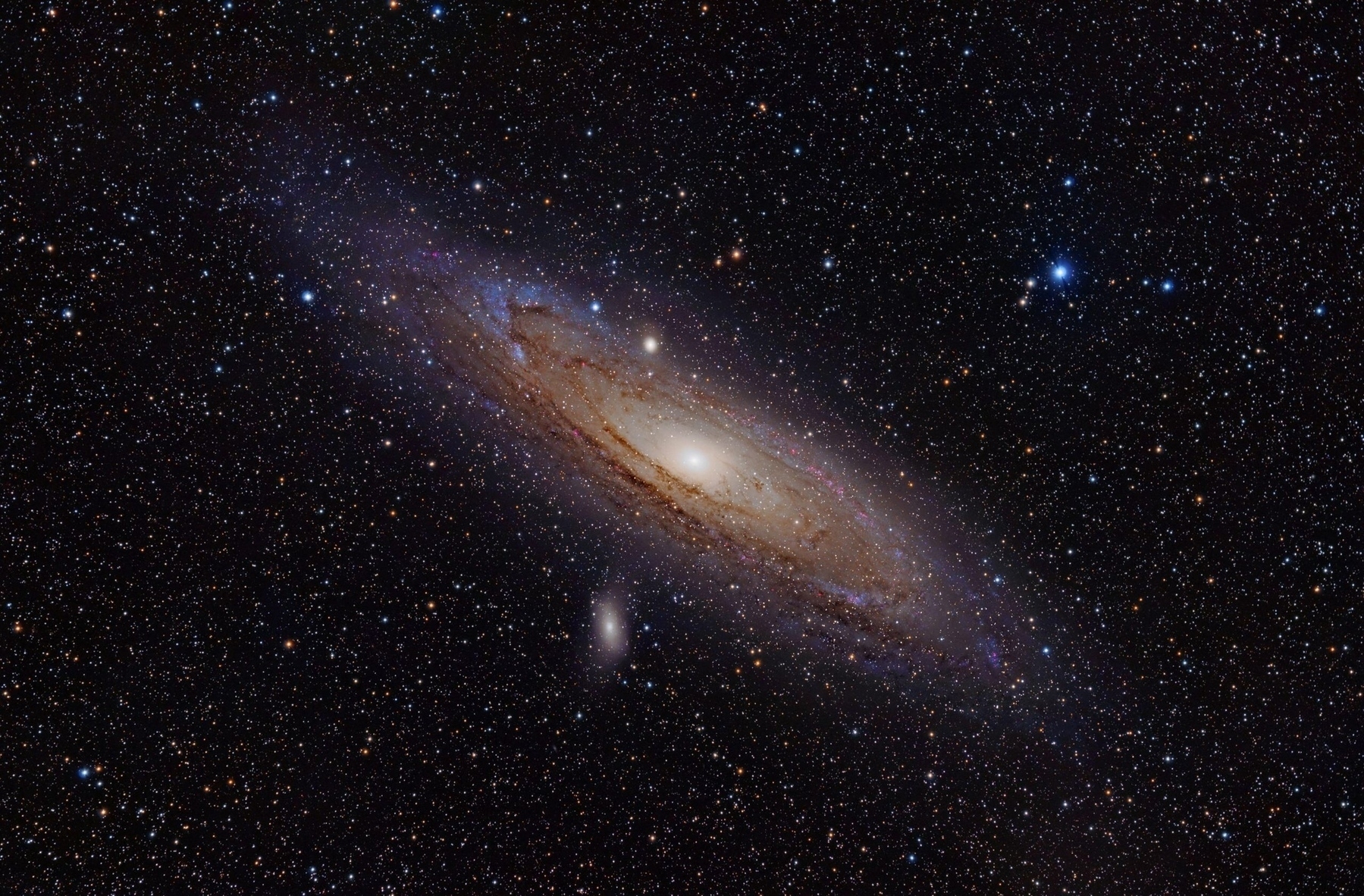Looking at other galaxies
One of the best things about living under really dark skies and having a decent telescope is viewing other galaxies. While I equally enjoy the many beautiful objects in our own galaxy such as nebulae and globular clusters, the hunt for distant galaxies has a meditative quality for me. Sometimes the finding is a bit of a let down. For example, last night I went looking for NGC 7042, a spiral galaxy. It took some doing but I found it. It’s 250 million light years away. Yeah. It was the faintest little smudge of light barely detectable on a very clear night with a decently sized telescope (12.5 inches). When I find these really faint ones I always laugh at my disappointment. Yes, it is a galaxy filled with billions of stars and yes, I just sighed in disappointment. But, but, it’s 250 million light years away I remind myself. Not only that it is moving away from us at 5,083 kilometers per second or, 1.7% the speed of light. There will come a time in the distant future when that galaxy and others are no longer visible from Earth. The stretched out light will no longer reach us. The Universe is expanding and that expansion is accelerating. Eventually galaxies that are currently visible to us will blink out. Of course, by that time we’ll likely not be here to notice.
The thing about viewing other galaxies is that it helps frame the scale of the Universe. When I look at the star Vega I’m seeing a star that is only 25 light years away. Yes, still a vast distance from our perspective. But it’s in our local neighborhood so to speak. In fact, it’s like a neighbor on our own street. Funny thing, the stars we see when we look up without a telescope are all in our local neighborhood. We’re only seeing about 6,000 of the very closest stars in our galaxy of 200 billion stars. When I look at the Orion Nebula I’m looking at something that is only 1,400 light years away. Sure, that’s a good bit further than Vega but again, remember that our Milky Way galaxy is an average of 100,000 light years in diameter. So, Orion is still very much in our local neighborhood.
[caption id=“attachment_928” align=“alignnone” width=“2560”] The Andromeda Galaxy is the largest galaxy of the Local Group which consists of about 45 other galaxies including our Milky Way.[/caption]
The Andromeda Galaxy is the largest galaxy of the Local Group which consists of about 45 other galaxies including our Milky Way.[/caption]
But back to the viewing of galaxies, the easiest to view from the Northern hemisphere of Earth is Andromeda which is “only” 2.5 million light years away. It fills the eyepiece of my telescope and can actually be seen with the naked eye if you’re under dark skies. I have no problem picking it out from the stars of the Milky Way. It’s oval of faint light is actually quite large and fills an area larger than the full moon in our night sky. It’s quite close and in fact, billions of years in the future we will in fact merge with Andromeda. I viewed Andromeda just two nights ago. I also viewed the Bode’s galaxy, M81 and the Cigar Galaxy, M82 which are a pair of galaxies 12 million light years away and are fairly bright and easy to find with a telescope. In 2014 a star went supernova in M82 and we were able to view it from Earth. Quite a show! So the pair is, in the larger scale of things, quite close. A bit further than Andromeda but not nearly as far as the 250 million light years that makes NGC 7042 so faint.
Faint and distant or bright and close, viewing other galaxies is a thrill because it means looking at the starlight of hundreds of billions stars. As those photons stream into my eyes I’ve got a direct connection with the ancient starlight created by billions of suns. It is light that has been stretching through the Cosmos for millions of years and ends its journey in my eye. The experience is one which enhances my perspective and gives life on Earth an added dimension. In seeing such distant worlds I begin to contemplate and understand the scale of the Universe in a way I had not before. It has changed who I am as a human as well as my understanding of what it means to be human.